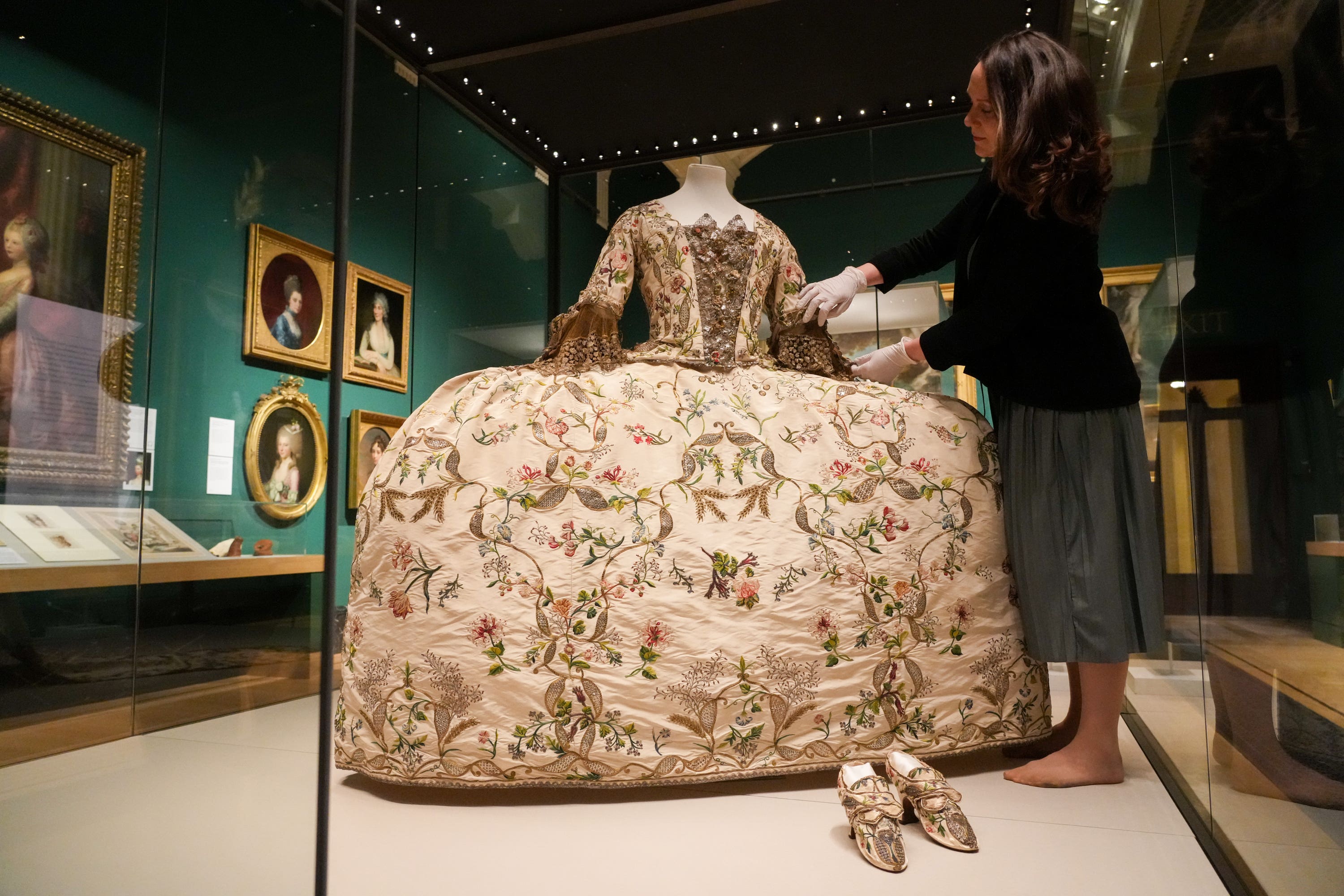New exhibition reveals Georgian fashion as surprisingly close to modern times
Style & Society at Buckingham Palace highlights the eighteenth-century commitment to upcycling garments and making fashion for everyone.

Your support helps us to tell the story
From reproductive rights to climate change to Big Tech, The Independent is on the ground when the story is developing. Whether it's investigating the financials of Elon Musk's pro-Trump PAC or producing our latest documentary, 'The A Word', which shines a light on the American women fighting for reproductive rights, we know how important it is to parse out the facts from the messaging.
At such a critical moment in US history, we need reporters on the ground. Your donation allows us to keep sending journalists to speak to both sides of the story.
The Independent is trusted by Americans across the entire political spectrum. And unlike many other quality news outlets, we choose not to lock Americans out of our reporting and analysis with paywalls. We believe quality journalism should be available to everyone, paid for by those who can afford it.
Your support makes all the difference.A new fashion exhibition suggests elements of Georgian fashion bear remarkable similarities to modern life.
Style & Society: Dressing The Georgians explores what fashion can tell us about life in the eighteenth and early nineteenth centuries.
Curator Anna Reynolds told the PA news agency there were elements of sustainability within the Georgian approach to fashion that reflect conversations today.
“Clothing at this time passed down from wearer to wearer – so an elite lady would often give her dresses to her lady’s maid, and there are funny accounts of people being unable to tell the difference between a lady’s maid and a grand lady,” she said.
“So there’s this idea of a more egalitarian society that we’re starting to see in the eighteenth century.”
One of the highlights of the exhibition is the earliest surviving British royal wedding dress – the gown worn by Princess Charlotte, the daughter of George IV, for her marriage to Prince Leopold in 1817.
The dress was “carefully preserved after her death”, Reynolds said, and it shows signs of having an “afterlife after Princess Charlotte wore it”.
The silk embroidered bridal gown “shows evidence of having been adjusted at least once, perhaps twice in its history”, Reynolds said, and cost could have been a big factor in this remarkably modern attitude towards sustainability.
“Clothing was so expensive, so precious, it took so much labour, the raw materials were expensive, so it was really valued,” the curator said.
“It was taken to the tailors to be retrimmed, to be adjusted as bodies change. So the notion of buy well, buy once, I think the Georgians very much adhered to.”
Reynolds said it was important for her to include examples of lower-class fashion in the exhibition, as well as the glitzier clothes of the upper crust.
“Fashion today is for everyone, and I really wanted to make sure we weren’t just telling a story of the elite,” she said. “The elite were just a small percentage of the population.”
This also reflects a unique phenomenon that was happening during the eighteenth century – previously, fashion trends were inspired by aristocrats and replicated by the masses, but the reverse started to occur. The elite started to look to the lower classes for inspiration, heralding an era of more relaxed dressing – what Reynolds refers to as the rise of street style.
Plus, fashion was becoming “more accessible”, Reynolds noted.
“You get the first fashion periodicals, and you also get fashion trends that are influenced by lower-class dress. So you get the rise of trousers, for example – whereas elite men had traditionally worn breeches with stockings, you get the rise of trousers which were worn by sailors.”
This is what Reynolds called an “inversion of the traditional hierarchy”.
According to Reynolds, fashion can tell volumes about the seismic changes that occurred during the Georgian period.
“There was so much innovation going on wherever you look – there are changes happening both culturally and socially as well as scientifically, so you get things like the rise of dentistry,” she said, which meant you even started to see people starting to show their teeth in portraits.
Innovations in materials also brought about change.
“One of the biggest changes in the eighteenth century is the rise of cotton, which we all wear so much of today. Clothes at this time had no elastic in them, so they had to be well cut in order to fit well to the body.
“Cotton becomes the darling fabric of the eighteenth century and it’s worn by all classes – you could have a very expensive, very fine muslin dress, or a simple cotton handkerchief that could be worn by the lower classes.”
Style & Society: Dressing The Georgians is at The Queen’s Gallery, Buckingham Palace from April 21 to October 8.